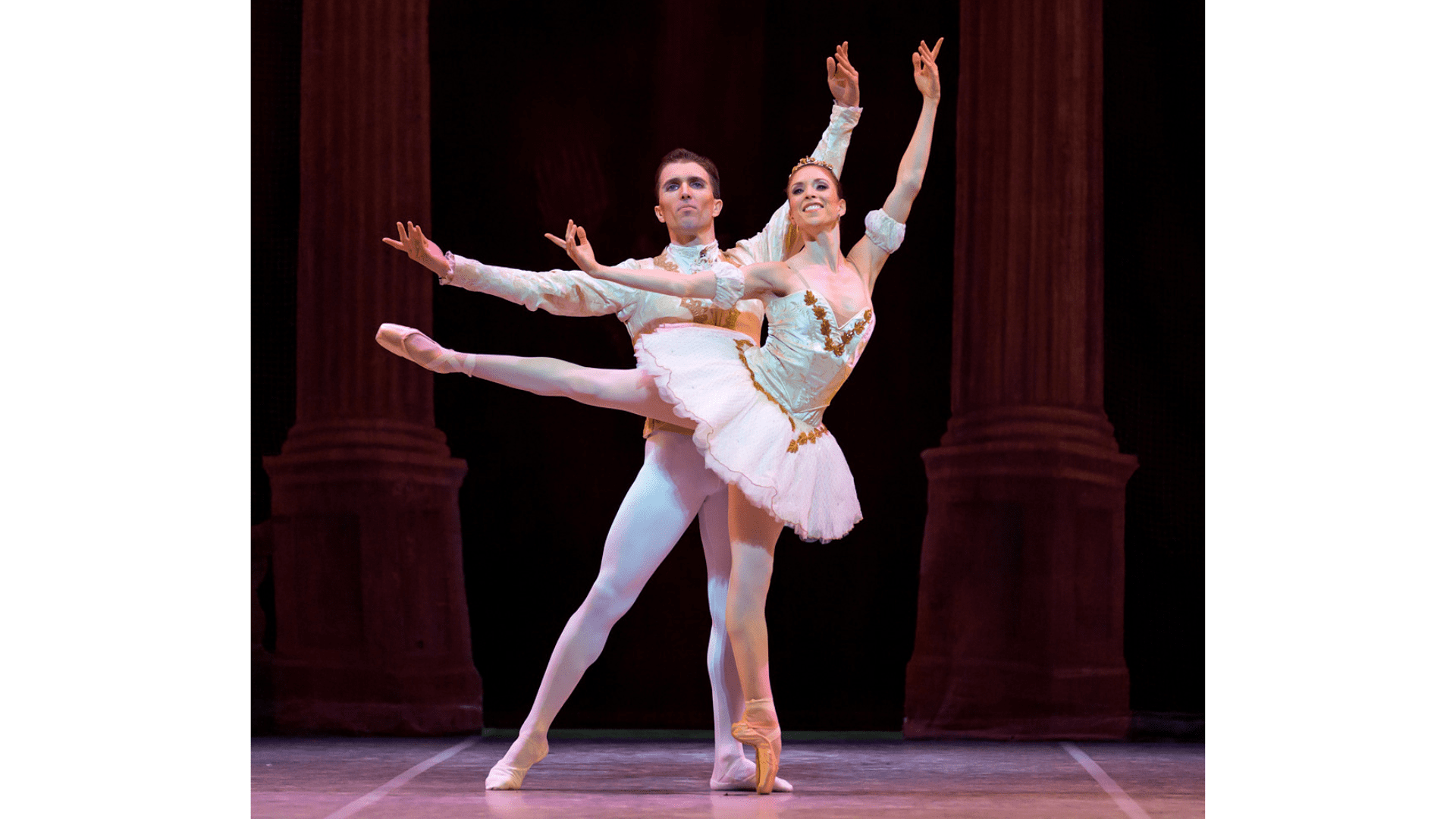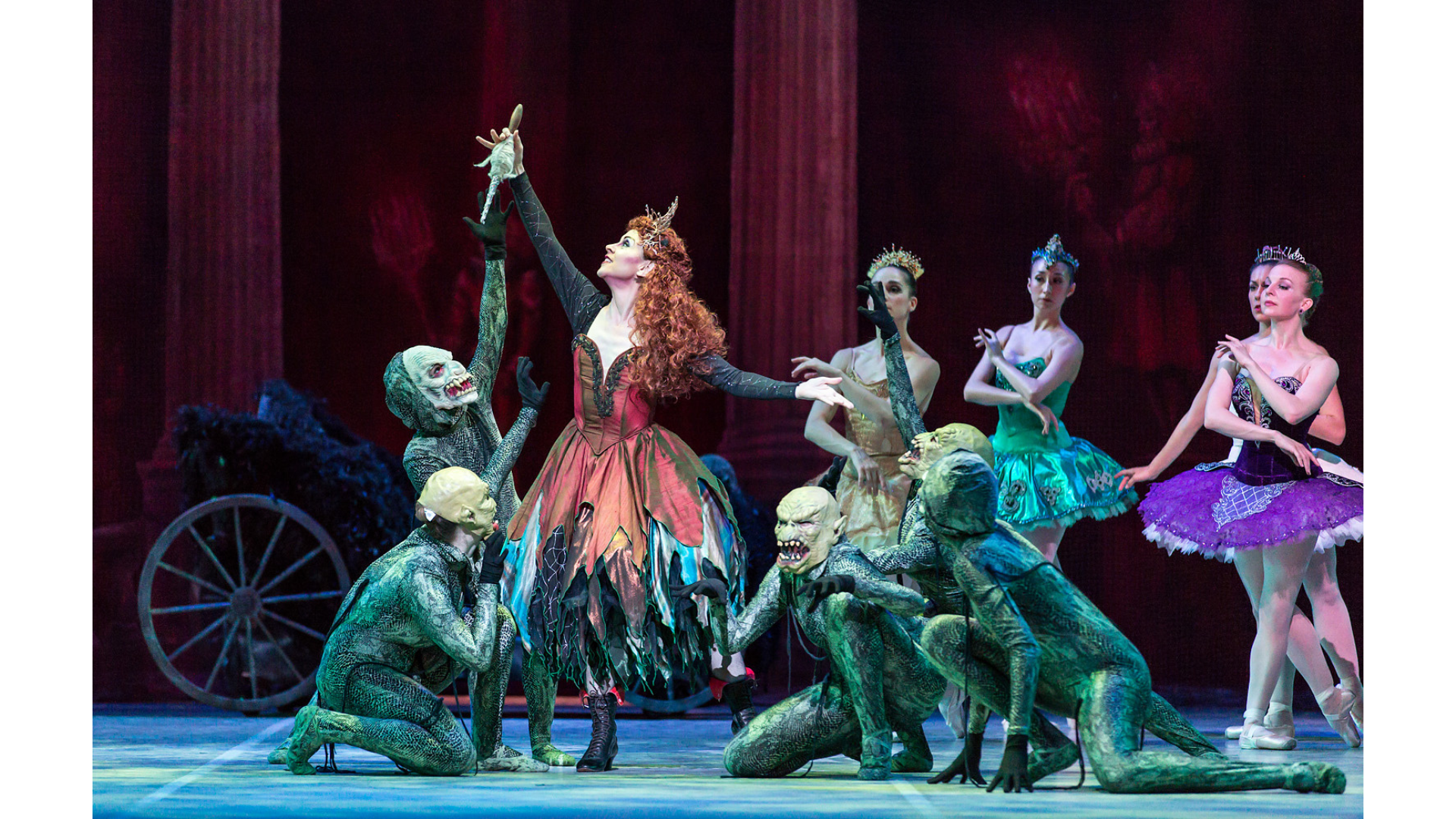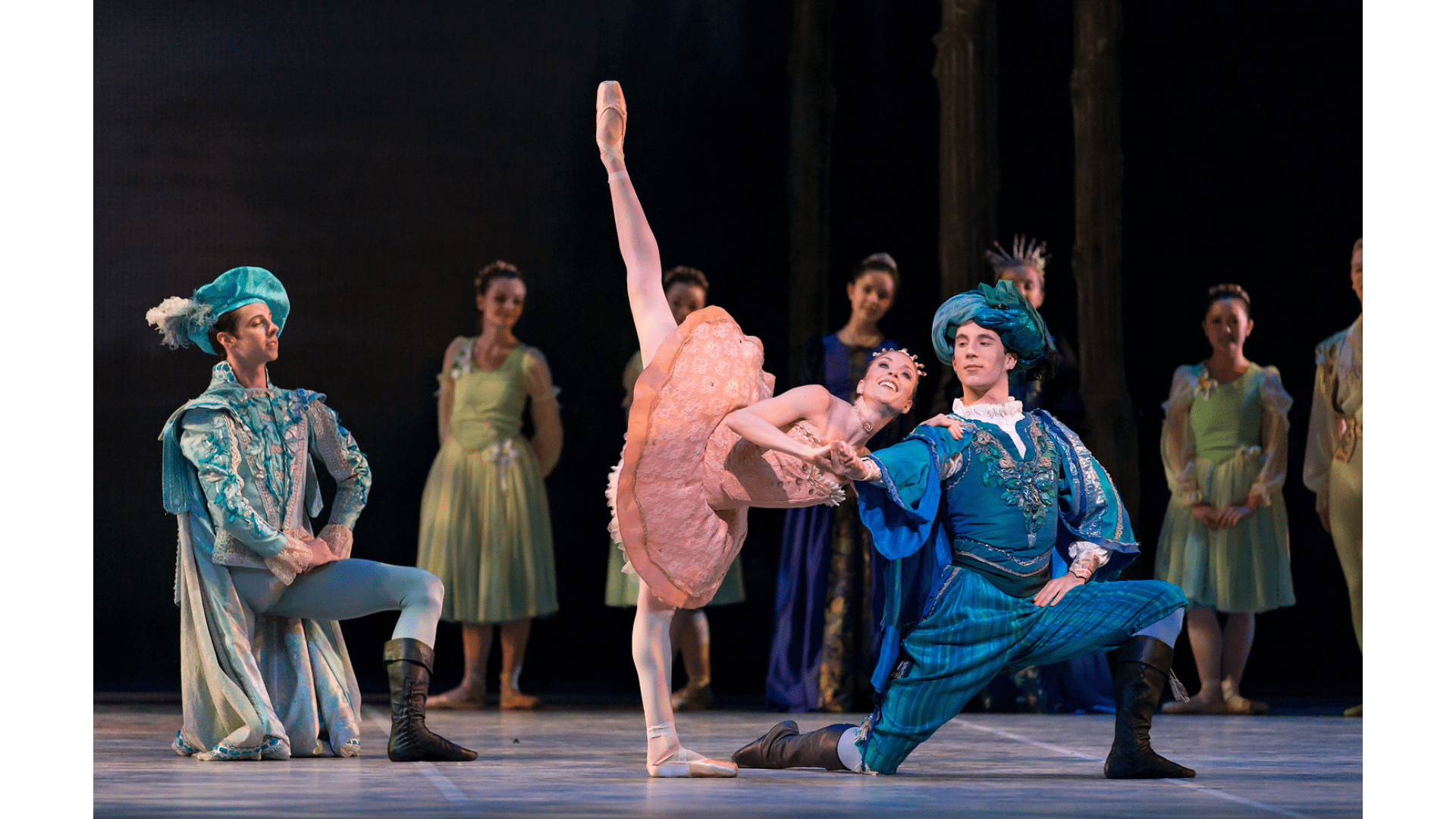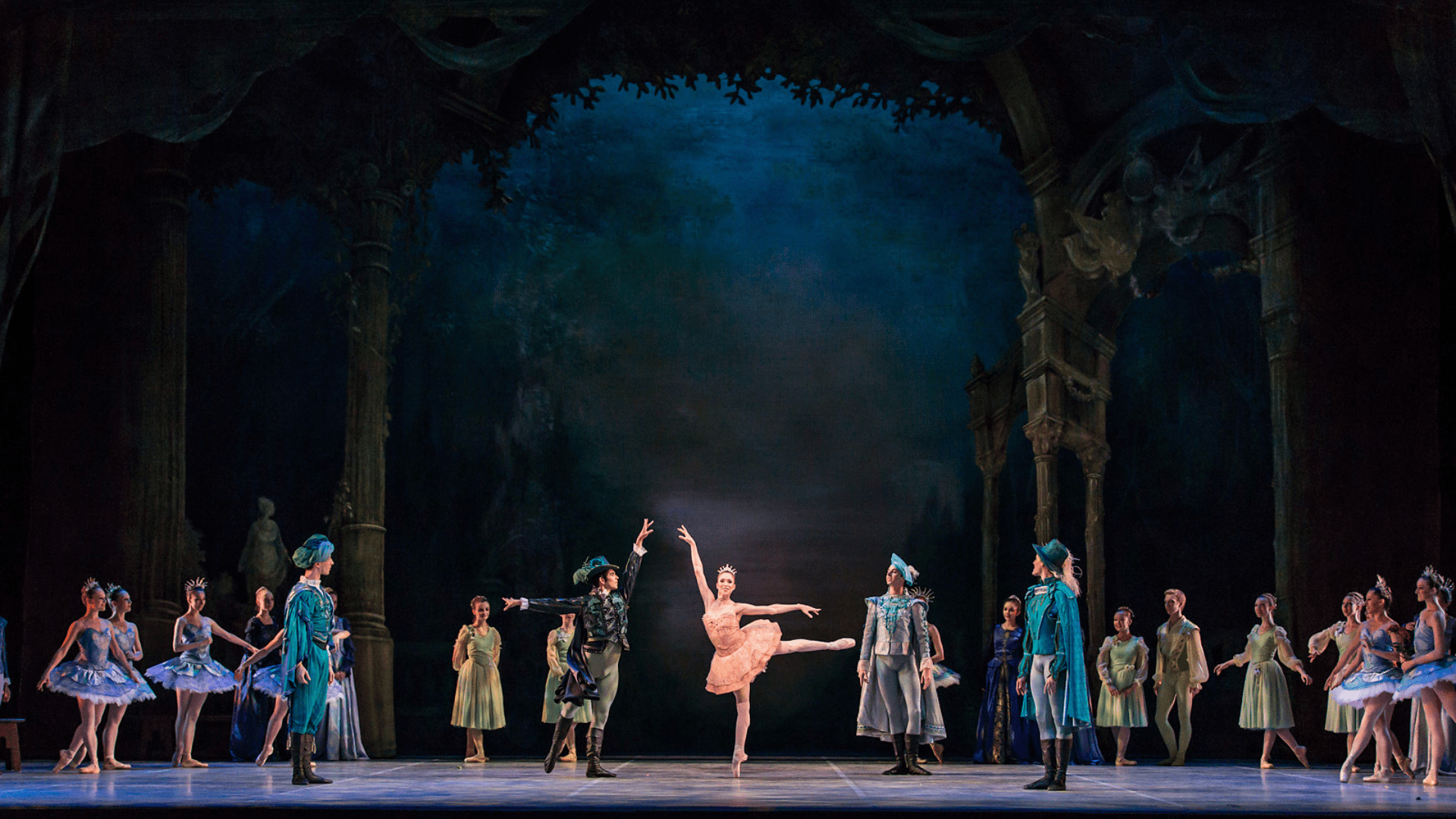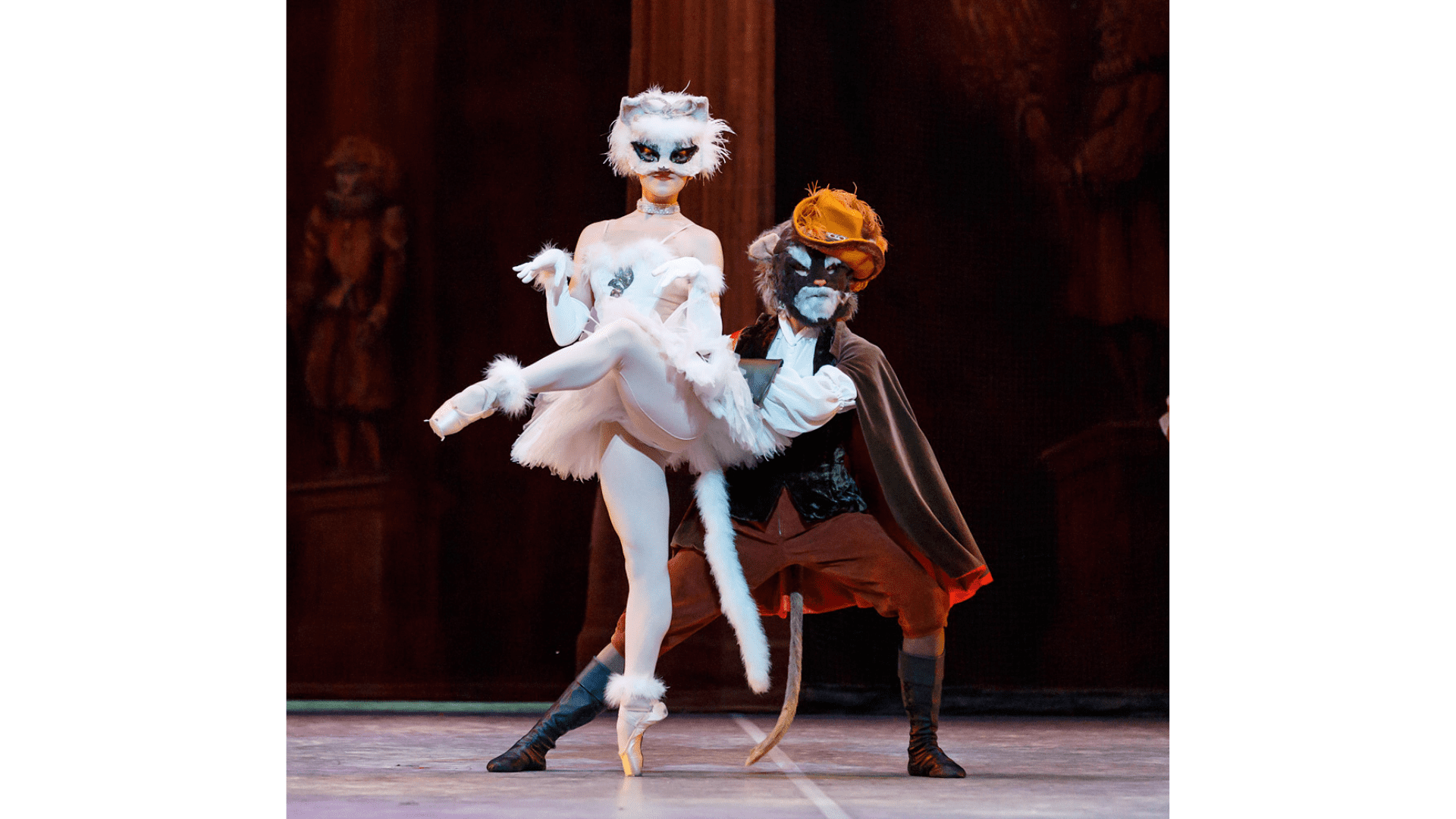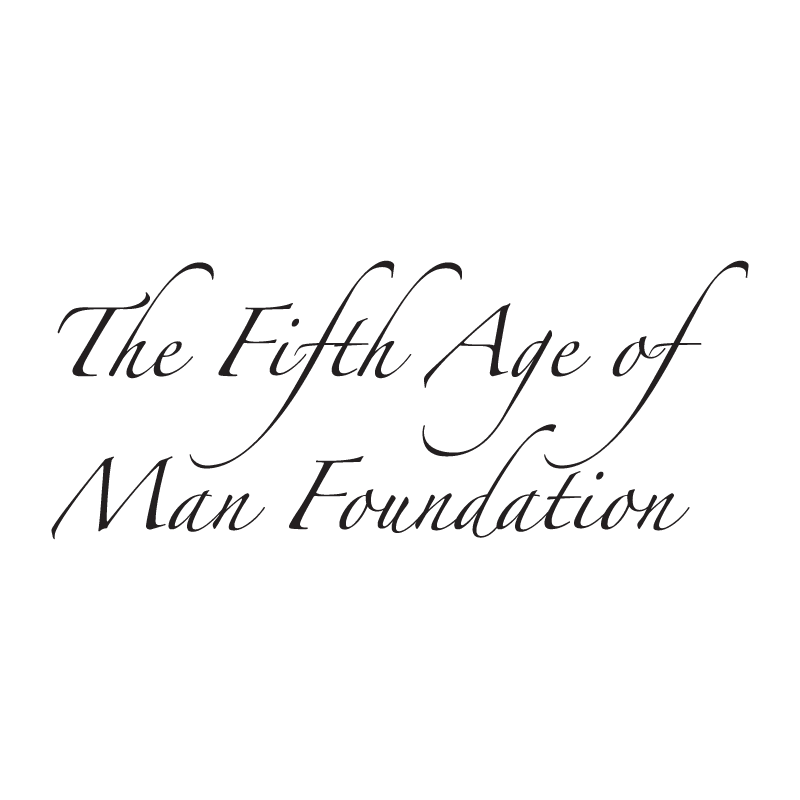The Sleeping Beauty
MAY 10, 11, & 12
Ballet Austin awakens the beloved fairy tale, The Sleeping Beauty, with four performances over Mother’s Day weekend! Tchaikovsky’s fabulous and familiar score comes to life in one of the most memorable classical ballets of all time, performed live by the Austin Symphony Orchestra.
Designed and constructed in England, this gorgeous production features exquisite sets, glittering costumes, and familiar storybook characters like Puss-in-Boots and Little Red Riding Hood. Let Ballet Austin transport you to a dream world of fairy godmothers, storybook creatures, and Prince Charming’s fairytale kiss!
CHOREOGRAPHY | Marius Petipa
MUSIC | Pyotr Ilyich Tchaikovsky
LIVE ACCOMPANIMENT | Austin Symphony Orchestra
RUN TIME | 2 hours 30 minutes, including two 15-minute intermissions (Act I: 55 min. | Act II: 20 min. | Act III: 35 min.)
4 PERFORMANCES:
- Friday, May 10 at 7:30 p.m.
- Saturday, May 11 at 2:00 p.m.
- Saturday, May 11 at 7:30 p.m.
- Sunday, May 12 at 3:00 p.m.
Please visit our FAQs page for information about parking, discounts, and more.
WHY WE RECOMMEND PURCHASING PERFORMANCE TICKETS *DIRECTLY* FROM BALLET AUSTIN
Ballet Austin strives to share the excitement and beauty of live professional dance with as many community members as possible. *As a 501c3 nonprofit organization, Ballet Austin raises funds throughout the year to help defray part of the production costs in order to bring live performances to you and keep the price of our tickets as low as possible. The following information is intended to assist you as a consumer and help you have the best experience possible.
When you purchase directly from Ballet Austin:
- You are assured your tickets are valid, and your seats are reserved for you/your family/your party.
- You have access to the most affordable ticket prices.* Ballet Austin tickets can range between $15 – $125 dollars (plus applicable fees), depending on location. If you are being asked to pay more per ticket, you are NOT buying from Ballet Austin.
- You have the flexibility to exchange your ticket
/s to another performance for a small handling fee, as tickets remain available.
If you choose to purchase Ballet Austin tickets from sources other than Ballet Austin, we recommend that you:
- Never pay cash or use apps such as Venmo to purchase tickets.
- Verify performance dates/times and check for sold-out performances BEFORE purchasing from a third-party seller or service by visiting the Ballet Austin website.
- Check the Long Center’s Dell Hall seating map to confirm the existence of the seats being offered to you. Long Center Seating Chart
NOTE: Issues related to tickets purchased from a third-party seller will need to be discussed with that company. Ballet Austin will have no record of these sales.
Our goal for each Ballet Austin performance is to create wonderful, lasting memories for you, your family, and your friends. If you have questions, let us help you by contacting our box office at 512.476.2163 or by email at boxoffice@balletaustin.org. We look forward to seeing you soon.
FEATURED VIDEO
Videos by Paul Michael Bloodgood and Jazz Collins
VIDEO GALLERY
Videos by Paul Michael Bloodgood and Jazz Collins
PHOTO GALLERY
Photography by Tony Spielberg
MEET THE ARTISTS
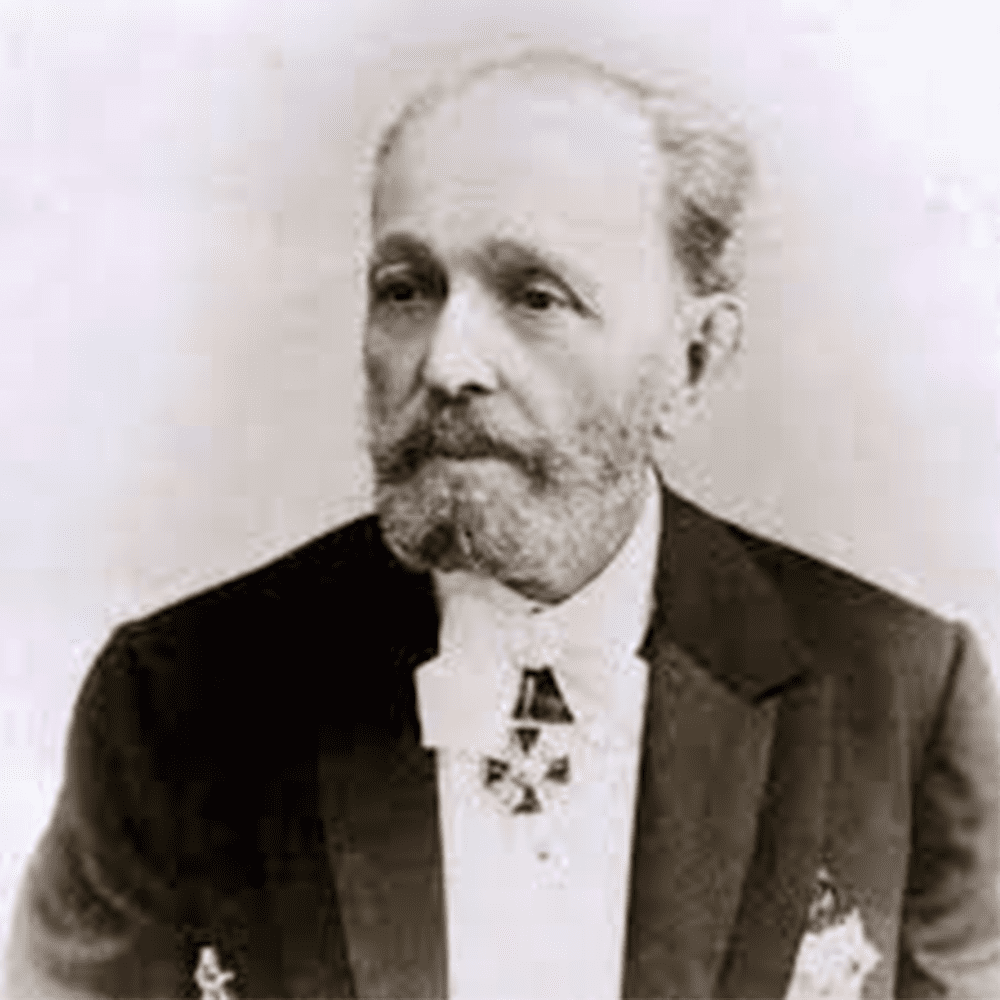
MARIUS PETIPA
Choreography
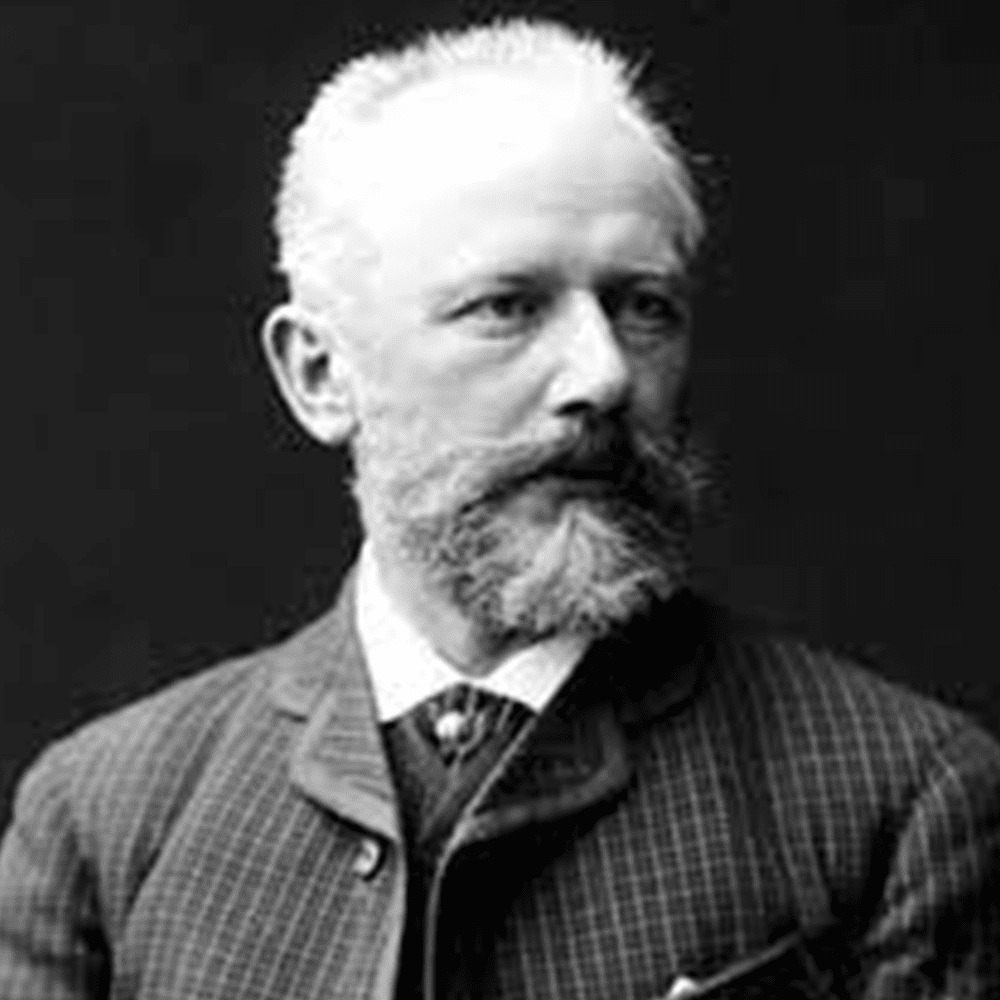
PYOTR ILYICH TCHAIKOVSKY
Music

AUSTIN SYMPHONY ORCHESTRA
Live Accompaniment
Marius Petipa, (born March 11, 1818, Marseille, France—died July 14, 1910, Gurzuf, Ukraine, Russian Empire), dancer and choreographer who worked for nearly 60 years at the Mariinsky Theatre in St. Petersburg and had a profound influence on modern classical Russian ballet. He directed many of the greatest artists in Russian ballet and developed ballets that retain an important position in Russian dance repertoire.
Petipa and his brother Lucien (later principal dancer at the Paris Opéra) received their early training from their father, Jean, a ballet master long active in Brussels. After Marius’ debut in Nantes, France, in 1838, he danced in Belgium, France, and the United States (he appeared in New York City in 1839) before accepting an engagement in Spain, where he gathered material for ballets later produced in Russia. He established a reputation as a talented pantomime artist and one of the outstanding dancers of his day.
Petipa made his initial appearance at the St. Petersburg Mariinsky Theatre in 1847 in Paquita and staged his first original ballet, Un Mariage sous la régence (“A Regency Marriage”), there in 1858. For his wife, the ballerina Mariya Surovshchikova, he created Le Marché des Paris (1859; “Parisian Market”; staged as Le Marché des innocents, 1861). His first outstanding success was La fille du pharaon (1862; “The Pharaoh’s Daughter”).
Later, after becoming choreographer in 1862 and chief choreographer in 1869, Petipa produced more than 60 ballets, working from carefully detailed plans that became the basis of modern classical ballet in Russia. He collaborated with Tchaikovsky on The Nutcracker (Casse Noisette, choreographed by his assistant Lev Ivanov) and The Sleeping Beauty and presented versions of Swan Lake, Raymonda, and Giselle that have been revived frequently. Among other major ballets are his Don Quixote (1869), La Bayadère (1877), and Le Corsaire (1899). After the death of his first wife, Petipa married another dancer, Lyubov Leonidovna.
Biography courtesy of britannica.com.
Pyotr Ilyich Tchaikovsky
(1840–1893)
Pyotr Ilyich Tchaikovsky is widely considered the most popular Russian composer in history. His work includes the ‘The Sleeping Beauty’ and ‘The Nutcracker.’
Who Was Tchaikovsky?
Composer Pyotr Ilyich Tchaikovsky’s work was first publicly performed in 1865. In 1868, his First Symphony was well-received. In 1874, he established himself with Piano Concerto No.1 in B-flat Minor. Tchaikovsky resigned from the Moscow Conservatory in 1878 and spent the rest of his career composing yet more prolifically. Tchaikovsky is most celebrated for his ballets, specifically Swan Lake, The Sleeping Beauty and The Nutcracker. He died in St. Petersburg on November 6, 1893.
Early Life
Russian composer Pyotr Ilyich Tchaikovsky was born on May 7, 1840, in Kamsko-Votkinsk, Vyatka, Russia. He was the second eldest of his parents’ six surviving offspring. Tchaikovsky’s father, Ilya, worked as a mine inspector and metal works manager.
When he was just five years old, Tchaikovsky began taking piano lessons. Although he displayed an early passion for music, his parents hoped that he would grow up to work in the civil service. At the age of 10, Tchaikovsky began attending the Imperial School of Jurisprudence, a boarding school in St. Petersburg. His mother, Alexandra, died of cholera in 1854, when he was 14 years old. In 1859, Tchaikovsky honored his parents’ wishes by taking up a bureau clerk post with the Ministry of Justice — a post he would hold for four years, during which time he became increasingly fascinated with music.
When he was 21, Tchaikovsky decided to take music lessons at the Russian Musical Society. A few months later, he enrolled at the newly founded St. Petersburg Conservatory, becoming one of the school’s first composition students. In addition to learning while at the conservatory, Tchaikovsky gave private lessons to other students. In 1863, he moved to Moscow, where he became a professor of harmony at the Moscow Conservatory.
Tchaikovsky’s Compositions
Operas
Pyotr Tchaikovsky’s work was first publicly performed in 1865, with Johann Strauss the Younger conducting Tchaikovsky’s Characteristic Dances at a Pavlovsk concert. In 1868, Tchaikovsky’s First Symphony was well-received when it was publicly performed in Moscow. The following year, his first opera, The Voyevoda, made its way to the stage — with little fanfare.
After scrapping The Voyevoda, Tchaikovsky repurposed some of its material to compose his next opera, Oprichnik, which achieved some acclaim when it was performed at the Maryinsky in St. Petersburg in 1874. By this time, Tchaikovsky had also earned praise for his Second Symphony. Also in 1874, his opera, Vakula the Smith, received harsh critical reviews, yet Tchaikovsky still managed to establish himself as a talented composer of instrumental pieces with his Piano Concerto No.1 in B-flat Minor.
From ‘Swan Lake’ to ‘The Nutcracker’ Ballets
Acclaim came readily for Tchaikovsky in 1875, with his composition Symphony No. 3 in D Major. At the end of that year, the composer embarked on a tour of Europe. In 1876, he completed the ballet Swan Lake as well as the fantasy Francesca da Rimini. While the former has come to be one of the most frequently performed ballets of all time, Tchaikovsky again endured the ire of critics, who at its premiere panned it as too complex and too “noisy.”
Tchaikovsky resigned from the Moscow Conservatory in 1878 to focus his efforts entirely on composing. As a result, he spent the remainder of his career composing more prolifically than ever. His collective body of work constitutes 169 pieces, including symphonies, operas, ballets, concertos, cantatas and songs. Among his most famed late works are the ballets The Sleeping Beauty (1890) and The Nutcracker (1892).
Personal Life
Struggling with societal pressures to repress his homosexuality, in 1877, Tchaikovsky married a young music student named Antonina Milyukova. The marriage was a catastrophe, with Tchaikovsky abandoning his wife within weeks of the wedding. During a nervous breakdown, he unsuccessfully attempted to commit suicide, and eventually fled abroad.
Tchaikovsky could afford to resign from the Moscow Conservatory in 1878, thanks to the patronage of a wealthy widow named Nadezhda von Meck. She provided him with a monthly allowance until 1890; oddly, their arrangement stipulated that they would never meet.
Death
Tchaikovsky died in St. Petersburg on November 6, 1893. While the cause of his death was officially declared as cholera, some of his biographers believe that he committed suicide after the humiliation of a sex scandal trial. However, only oral (no written) documentation exists to support this theory.
Biography courtesy of biography.com.
About the Austin Symphony Orchestra
The mission of the Austin Symphony Orchestra Society, Inc. is to enhance the cultural quality of life for the adults and young people of Austin and Central Texas by providing excellence in music performance and educational programming.”
Founded in 1911, the Austin Symphony Orchestra is Austin’s oldest performing arts group. The ASO offers a complete season of musical and educational programming. Masterworks concerts include a series of eight concert pairs running monthly September through May in the state-of-the-art Joe R. & Teresa Lozano Long Center for the Performing Arts. Our season also features the Sarah & Ernest Butler Pops Series: October & February Pops at the Long Center and December & June Pops at Palmer Events Center. Programming for the entire family includes the Halloween Children’s Concert, and the Christmas in the Community, as well as the popular James C. Armstrong Youth Educations Programs, which include Children’s Day Art Park, Young People’s Concerts, High School Concert Tour and a variety of other school programs.
Symphony Square at 11th and Red River is home to the ASO’s administrative offices. This complex of four historic Austin buildings (two of which are owned by the ASO and Waterloo Greenway) is also home to the Women’s Symphony League of Austin.
Please Note: As of January, 2021 our new temporary administration office is located at 1806 Rio Grande St., Austin, TX 78701.
Music Director, Maestro Peter Bay: https://austinsymphony.org/about/conductor/
Austin Symphony Orchestra Musicians: https://austinsymphony.org/about/musicians/
Subject to change
*Friday 7:30 p.m., Saturday 2:00 p.m.
**Saturday 7:30 p.m., Sunday 3:00 p.m.
***Guest Artist
Aurora
Dianetzy Rojas*
Katherine Deuitch**
Prince Désiré
Morgan Stillman*
James Fuller**
Queen
Chelsea Marie Renner***
King Florestan
James Fuller*
Morgan Stillman**
Lilac Fairy
Courtney Holland* / Grace Morton**
Fairies
Candide
Alyssa Manguiat
Coulante
Meg Kataoka
Miettes qui tombent
Sahel Flora Pascual
Canari qui chante
Isabella Phillips Lynch*
Vivien Farrell**
Violente
Lexi Eicher
Cavaliers
Ian J. Bethany, Colin Canavan, Arnaldo Hernandez, Paul Martin, Jack Morris, Leighton Taylor
Lilac Fairy Attendants
Anika Crouser, Alexa Dollar, Celena Fornell, Katelyn Hagel, Isabelle Lapierre, Alexandra Owens
Carabosse
Edward Carr
Carabosse creatures
Tristin Filsinger, Colin Heino, Jordan Lovelace, Jackson Rankin
Catalabutte
Julius Taiber***
Nanny
Claire Sturgeon
Courtiers
Isabelle Lapierre* / Reagan Arenz**, Katelyn Hagel* / Carly Darnell**, Ava Tellier
Andrew Buckley, Kyawzwa Jeremy Lwin, Ezra Schenck
Pages
10 Academy students (to be determined)
Act I
Garland Waltz
Amelia Bednar* / Anika Crouser**, Alexa Dollar* / Celena Fornell**, Carly Darnell* / Katelyn Hagel**, Reagan Arenz * / Isabelle Lapierre**, Angelina Carbonaro* / Nya Tinio-Mitchell**, Alexandra Owens
Tristin Filsinger, Colin Heino, Jordan Lovelace* / Jackson Rankin**
Suitors
Colin Canavan, Arnaldo Hernandez, Jack Morris, Leighton Taylor
Aurora’s Friends
Lexi Eicher, Vivien Farrell, Meg Kataoka, Isabella Phillips Lynch, Alyssa Manguiat, Sahel Flora Pascual
Act II
Hunting party
Reagan Arenz, Amelia Bednar, Alexa Dollar, Alayna Hamade* / Elianna Price**, Claire Sturgeon, Ava Tellier
Tristin Filsinger, Colin Heino, Jordan Lovelace, Kyawzwa Jeremy Lwin, Jackson Rankin, Ezra Schenck
Tutor
Ian J. Bethany
Countess
Carly Darnell
Vision
Anika Crouser, Lexi Eicher, Vivien Farrell, Celena Fornell, Katelyn Hagel, Meg Kataoka, Isabelle Lapierre, Isabella Phillips Lynch, Alyssa Manguiat, Alexandra Owens, Sahel Flora Pascual, Nya Tinio-Mitchell
Act III
Polonaise
Reagan Arenz* / Isabelle Lapierre**, Amelia Bednar, Carly Darnell* / Katelyn Hagel**, Alexandra Owens
Tristin Filsinger, Colin Heino, Jordan Lovelace* / Jackson Rankin**, Jack Morris
Puss ‘n Boots and the White Cat
Paul Martin, Alyssa Manguiat
Princess Florine and Bluebird
Vivien Farrell* / Isabella Phillips Lynch**
Ezra Schenck* / Kyawzwa Jeremy Lwin**
Little Red Riding Hood and the Grey Wolf
Sahel Flora Pascual, Ian J. Bethany
SYNOPSIS
Prologue
King Florestan and his Queen have welcomed their first child, Princess Aurora, and declare a grand christening ceremony to honor her. During the christening of Princess Aurora, several fairies are invited to the ceremony to bestow gifts on the child. Each fairy represents a virtue, such as beauty, courage, sweetness, musical ability, and mischief. The Lilac Fairy arrives. But before she can bestow her gift the palace grows dark. With a clap of thunder, the evil fairy Carabosse arrives with her minions. Carabosse is furious that she had not received an invitation to the christening and places a curse upon the baby princess: Aurora will grow up to be a beautiful, virtuous and delightful young lady, but on her sixteenth birthday she will prick her finger on a spindle and die. The King and Queen are horrified and beg Carabosse for mercy but she shows none. However, the Lilac Fairy intervenes. Though she does not have enough power to completely undo the curse, she alters it, allowing the spindle to cause a peaceful 100-year sleep for the princess, rather than death. At the end of those 100 years, she will be woken by the kiss of a handsome prince.
Pause
Act I
It is the day of Princess Aurora’s sixteenth birthday. Celebrations are underway, though the King is still unsettled by Carabosse’s omen. The townsfolk perform an elaborate dance with flower garlands, and Princess Aurora arrives afterward. Carefree and lovely, she is introduced to four suitors by her doting parents. Presently, a cloaked stranger appears and offers a gift to the princess: a spindle. Having never seen one before, Aurora curiously examines the strange object as her parents desperately try to intervene. As predicted, she pricks her finger. While initially appearing to recover quickly, she falls into a swoon and collapses. The cloaked stranger reveals herself to be Carabosse, who believes that her curse still stands and that the princess is dead. But the Lilac Fairy appears and reminds the King and Queen that Aurora is merely asleep. The princess is carried off to bed, and the Lilac Fairy casts a spell of slumber over the entire kingdom, which will only be broken when Aurora awakens.
Intermission
Act II
One hundred years later, Prince Désiré is at a hunting party with his companions. He is melancholy and his friends try to cheer him up. Still unhappy, he asks to be alone and the hunting party departs. In the forest he is met by the Lilac Fairy who shows him a vision of the beautiful princess, and the prince is immediately in love. Désiré begs to be taken to the princess. The Lilac Fairy takes him to the castle, and has him cut away the layers of vines with his sword. Carabosse appears and attempts to deter him, but he and the Lilac Fairy finally manage to defeat her. Once inside the castle, Désiré awakens Aurora with a kiss. The rest of the court wakes as well. The King and Queen heartily approve when the prince proposes marriage and the princess accepts.
Intermission
Act III
The royal wedding is underway. Guests include the fairytale characters Puss in Boots and the White Cat, Princess Florine and the Bluebird, and Little Red Riding Hood and the Wolf. Aurora and Désiré perform a grand Pas de Deux. The prince and princess are married, with the Lilac Fairy blessing the union.

